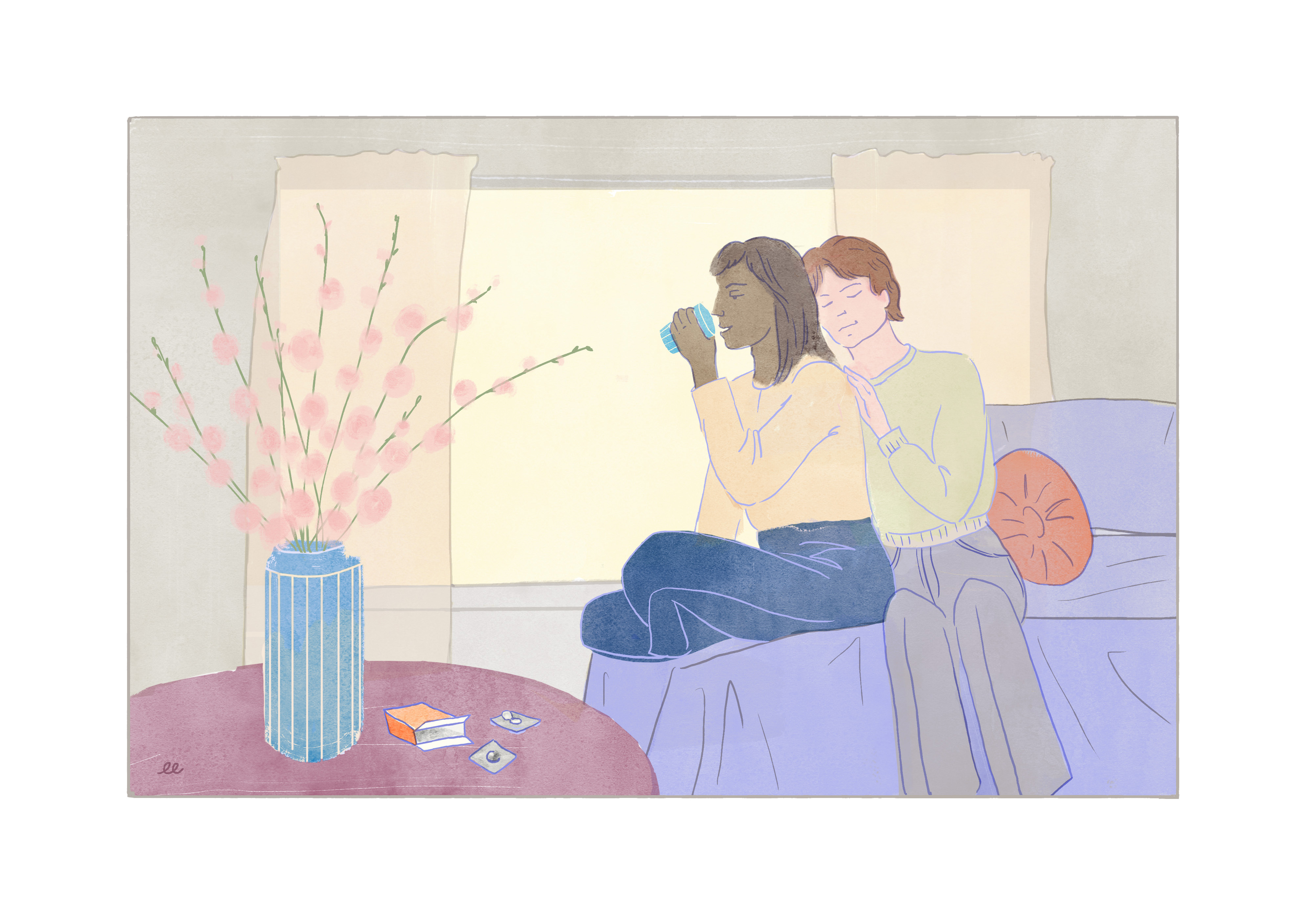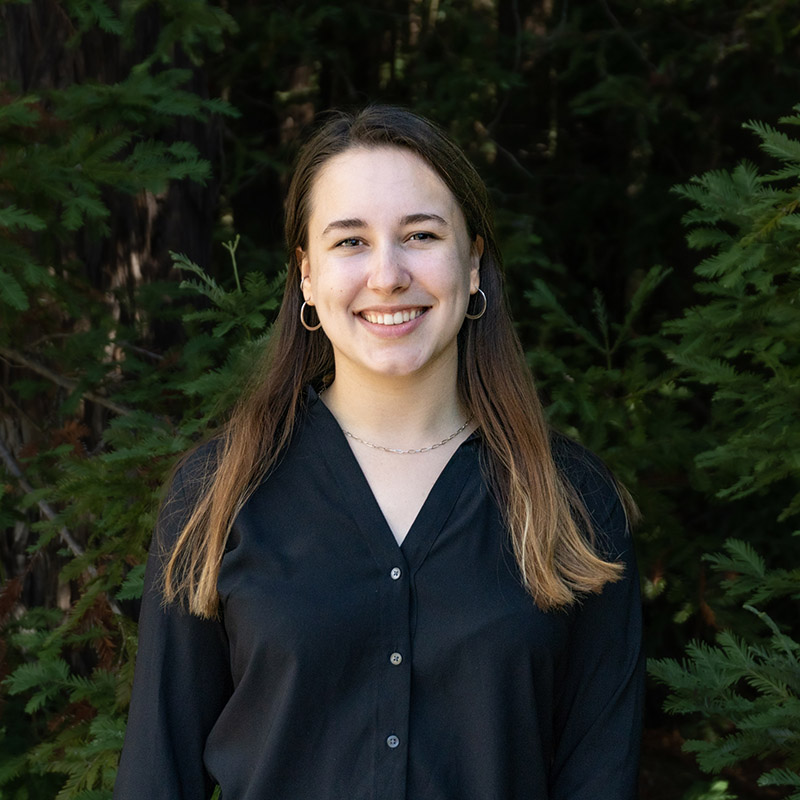Bringing Abortion Pills to Pharmacies
For the first time ever, medication abortion is allowed to be dispensed in pharmacies. This policy change stems from the work of dedicated scientists, Kate Hull reports. Illustration by Erin Ellis.

Illustration: Erin Ellis
Alex was 16 years old when she found out she was pregnant. In 2012, on an otherwise typical Wednesday morning, Alex sat on an exam table waiting for an abortion. Specifically, she was waiting to receive two types of pills. She opted for a medication abortion because it felt more private: her pregnancy would end over a few days in the comfort of her home, allowing her space to process her emotions at the time, Alex, now 26, recalls.
A doctor joined Alex and her mother in the exam room. After an ultrasound and a private counseling session to make sure Alex knew what to expect, and wasn’t being coerced, the doctor handed Alex a cup of water and the first of the pills. Minutes later, Alex was on her way home, having completed half of the only medication-based abortion regimen approved for use in the United States. The first pill was mifepristone, which stopped the pregnancy from developing further. After school the following day, Alex took the second pill, misoprostol, which initiated a series of contractions that ushered the pregnancy out from her body.
Alex experienced cramping and bleeding which felt like “a slightly abnormally heavy period” she says, but nothing she hadn’t experienced before.
Until recently, Alex’s experience was the norm. Patients have only been able to access mifepristone via in-person doctor appointments or, because of the COVID-19 pandemic, through a select few mail-order telehealth clinics. But in January, the FDA decided to allow mifepristone to be dispensed in brick-and-mortar pharmacies for the first time, a decision which could allow medication abortions to be more readily available. While patients would still need a prescription to obtain mifepristone, this decision could help preserve access to abortion after the Supreme Court overturned Roe v. Wade in June 2022.
Central to this decision was the work of a small team of scientists in the Advancing News Standards in Reproductive Health Lab at the University of California, San Francisco. From 2018 to 2022, the team conducted three studies on the safety of patients who picked up abortion medications from pharmacies and took the pills at home.
Finley Baba, a public health researcher who worked on the study, says researchers and doctors have long known that mifepristone is safe. The goal of the study was to show the FDA there was no reason for access to mifepristone to be as tightly regulated as it was.
Mifepristone: Friend or Foe
Mifepristone has had a polarizing presence in the United States since its approval in 2000 by the FDA. Unlike misoprostol, which was first approved for the treatment of gastric ulcers, mifepristone was developed explicitly to aid in abortion. The French scientist who developed it in 1982, Étienne-Émile Baulieu, explained in a 2022 New Yorker article that his intention was to give patients “a choice, that, through a pill, respects their privacy and physical integrity and allows them to avoid the aggression of surgery.” Mifepristone was approved in France in 1988.
When it was finally approved in the US, the FDA mandated that mifepristone could only be dispensed under the supervision of a certified prescriber – typically a doctor but sometimes a nurse practitioner or physician’s assistant – at clinics, medical offices, or hospitals. These regulations were later codified in the FDA’s Risk Evaluation and Mitigation Strategies in 2011. This program was created as a safeguard “for certain medications with serious safety concerns to help ensure the benefits of the medication outweigh its risks.”
What’s unusual, researchers and doctors alike note, is that mifepristone’s safety profile is very different than similar medications under these guidelines.
“All the evidence shows that this drug is super safe.”
“The fact that it’s so highly regulated would put it on the level of drugs that are really toxic or could have really terrible outcomes,” says Baba. But “all the evidence shows that this drug is super safe.”
Mifepristone and misoprostol together are 97.4% effective, and adverse outcomes are extremely rare – less than 0.4% of people will experience a major complication, and the mortality rate is less than 0.001%. As of 2020, medication abortion accounts for 53% of all abortions, although the total number of abortions has not changed since medication abortion’s introduction.
Currently, the FDA has authorized medication abortion up to 10 weeks of pregnancy. Of note, these guidelines lag behind those of the WHO, which authorizes it up to 12 weeks. The most common side effects of mifepristone-misoprostol regime include stomach pain, back pain, diarrhea, dizziness, nausea or vomiting — particularly after taking misoprostol.
Mifepristone is, in fact, “safer than Tylenol,” notes to Caitlin Gerdts, Vice President of Ibis Reproductive Health. Tylenol overdose, by comparison, is the leading cause of acute liver failure in the U.S. and accounts for over 600 deaths annually.
When the FDA first put these regulations into place the agency had limited experience with medication abortion, and wanted to make sure that the medication was safe. Yet, more than 20 years later, there is no evidence that these regulations improved patient safety. So why are these regulations still in place?
“The honest answer is politics” states Gerdts, “it has nothing to do with science.”
Let There Be Mifepristone
Back in 2015, Baba was in school in New Orleans obtaining her master’s in public health. At the time, her focus was global health. Just a block from her house, a new Planned Parenthood construction site attracted a constant stream of anti-abortion protestors. “I yelled at them every day,” Baba says with an eyeroll.
But it also planted a seed in Baba’s head: “I remember being like, why [am I] studying global health? This is an issue that is so bad in our country and it’s not slowing down.”
When Baba joined the UCSF team in 2016, they were in the midst of a national study that assessed barriers to abortion provision by obstetrician-gynecologists. The big one? The in-person dispensing FDA requirement. Stocking and dispensing the medication at clinical facilities was logistically challenging and costly, preventing many doctors from offering medication abortion. But if mifepristone could be dispensed in pharmacies, the number of doctors providing medication abortion could double, estimated the 2021 study.
Given the extensive political tension surrounding abortion generally, and mifepristone specifically, the FDA is extremely cautions about updating its rules. “Quite literally, every single time they approve any kind of update for us, somebody comes along and says the FDA did something not correct,” explains a representative from Danco Laboratories, one of only two U.S. companies that manufactures mifepristone. Drug companies, like Danco, often serve as the intermediaries between research and policy, and petition the FDA to update policies when new research surrounding medication comes out. And this research has to be airtight, notes the Danco representative.
To convince the FDA that medication abortion was safe for pharmacies to distribute, Baba helped design and run a two-part study examining the experiences of patients accessing medication abortion in a pharmacy and the experiences of pharmacists trained to dispense the medication. The study ran at pharmacies in Northern California and Washington state between 2018 and 2020.
Prior to picking up the medications, doctors provided participating patients with instructions on when and how to take mifepristone and misoprostol. Patients then went to the pharmacy to obtain their prescription, where they were assisted by a trained pharmacist who dispensed the medication and provided brief counseling. The process was very similar to picking up any other prescription.
Of the 260 participants, 91% reported being very or somewhat satisfied with their experience at the pharmacy, and 96% reported being very or somewhat satisfied with their treatment by pharmacy staff. Of patients who had reported a prior medication abortion, most said the experience was the same or better as receiving the medication at a clinic.
In an open-response section to a questionnaire that was part of the study, participants said they liked the ability to schedule when they would take the medications, making it more convenient and allowing them to have more control over when the abortion would take place. When asked how they would prefer to obtain medication abortion in the future, if needed, a majority (62%) responded that they would prefer to have medication abortion available through prescriptions from primary care clinics. Critically, less than two percent of patients had a serious health problem, and none were related to pharmacist dispensing.
In interviews, most pharmacists reported they supported dispensing mifepristone at pharmacies, and felt that it would “improve access of care to patients, but also [reduce] the burden on providers.” When asked about their experience administering mifepristone, pharmacists reported that it was “no big deal” and from a workflow standpoint “unremarkable” and “almost kind of boring.”
Baba says the results were almost laughable: “Like guess what? If you give someone a medication in a pharmacy down the street, as opposed to the doctor just handing it to them, and they take it, the medication is just as effective as if they were getting it [at the clinic]… our big finding was so unsurprising.”
Pharmacy Dispensing of Mifepristone: It’s “No Big Deal”
Even if the results were unsurprising, collecting this data was key in the FDA policy update. It provided an unassailable case that dispensing medication abortion in pharmacies was no more dangerous than being handed the pill directly in a clinic.
“[The research] definitely played a critical role in helping get everything moved along,” the Danco Laboratories spokesperson says, “without it, who knows where we’d be, quite honestly.”
The study’s findings emerged in March of 2020, just as COVID-19 began its deadly sweep across the world, shuttering millions of people indoors. The pandemic also made accessing abortion even more fraught and dangerous because mifepristone was still only allowed to be dispensed in clinics. To obtain abortion care patients had to risk catching the virus.
“Pharmacists were excluded completely this whole time with medication abortion” recalls Jessica Nouhavandi, founder of the online pharmacy HoneyBee Health, “it was bullshit.”
During the beginning of the pandemic, Nouhavandi worked frantically to get mifepristone available to those who needed it, efforts that made HoneyBee health first pharmacy in the U.S. to provide mifepristone.
Then, in June of 2022, Roe v Wade was overturned, which allowed states to determine the legal status of abortion. The decision resulted in a massive influx of patients ordering medication abortion from online telehealth services, as well as patients traveling for abortion care to states where abortion remained legal.
In so-called “haven states,” where abortion is still legal, “pharmacy access is really important,” says Caitlin Gerdts, of Ibis Reproductive Healthcare. “Clinics are underwater in every haven state, so if you have a pharmacy access for those folks who are getting [an abortion] early on in their pregnancy and are comfortable getting the medication and taking it at home – oh my god does that relieve in-person time burden on clinics.”
Jessica Hamilton, Medical Director of Planned Parenthood in Mar Monte, California, says when she saw the first patients coming into their clinic from states like Texas that had banned abortion “it would put chills up your spine just knowing how much they went through to get this care.” This situation is now commonplace – the Planned Parenthood team supports patients who come in from out of state every day. Providers, like Hamilton, often need to stay late to help all the patients seeking care.
Although this is an important step forward, state restrictions on abortion access, as well as legislative concerns still in place from the FDA hamper the accessibility of medication abortion. Pharmacies also have some discretion over whether they will dispense medication abortion pills. In a statement to Politico, Walgreens said they will not dispense mifepristone in several states where the medication remains legal — citing threats from Republican state attorneys general.
Gerdts says that even with the progress that’s been made to allow pharmacies to provide medication abortion pills, it is “nowhere near enough.” Pharmacies in states where there are abortion bans can’t dispense the medications, explains Gerdts, and “pharmacies who dispense mifepristone have to jump through so many hoops[that] it’s not going to be worth it for tiny little pharmacies and tiny communities where it might really help.”
These findings are being put to the test by a lawsuit in Texas by a group called the Alliance of Hippocratic Medicine against the FDA, which alleges that mifepristone is not safe and aims to have the drug pulled permanently from the market. Trump-appointed Judge Matthew Kacsmaryk, who presides over the Amarillo Division of the Northern District of Texas, is expected to rule in favor of the plaintiffs. If the plaintiffs win, mifepristone and potentially misoprostol will no longer be available for medication abortion. This case could trickle up to the Supreme Court.
This lawsuit is just the latest example of idealogues trying to restrict access to abortion under the guise of questioning mifepristone’s safety—a claim that makes researchers bristle.
“Abortion at any gestation is safer than childbirth.”
“Abortion at any gestation is safer than childbirth,” says Gerdts. Taking a pregnancy to term “is incredibly dangerous for the person, and childbirth is also incredibly dangerous. If air travel were as dangerous as giving birth, no one would ever get on [a plane].”
What’s more, Gerdts emphasizes, being denied a wanted abortion can have numerous harmful consequences, including economic hardship, maintaining contact with a violent partner, having to raise a child alone and increased risk of suicide.
Abortion is Healthcare
Baba hopes that one day abortion medication will be available over the counter. Until then, researchers like Baba will continue to build evidence that the medication is safe, effective and critical to public health.
Limits on abortion access directly impact people like Alex. “I think there is great potential [for pharmacy access], because there is such a large portion of the population that can have uncomplicated abortions at home, so I definitely support it,” she says.
Alex says her decision to have an abortion was the right one for her. “I got to go to college and travel the world and meet my husband. All because I had the freedom to move around and in the way that was right for me,” she says. “I really do want to be a parent. And I know that I will be a great parent and I think I’ve just given myself and my family and my relationships a better opportunity than if I would have just gone ahead and had a baby at 16.”
© 2017 Kate Hull / UC Santa Cruz Science Communication Program

Kate Hull
Author
B.A. (Neuroscience) Oberlin College
Internships: Lookout Local, KSQD, Science Magazine
My junior year of college, I took a course exploring the question, “What is consciousness?”
In our quest to answer that question, my classmates and I read stories of real people, including Oliver Sacks’ illuminating case studies, and Jean-Dominique Bauby’s account of his life with locked-in syndrome. We even discussed the playful somersaults of our professor’s cat. Was kitty’s joy akin to human happiness?
I delighted in this class because it underscored why I was interested in neuroscience: It’s about understanding the human experience. Ultimately, this class helped me realize that I wanted to combine science with storytelling, leading me to science journalism.

Erin Ellis
Illustrator
B.F.A. (Illustration) Maryland Institute College of Art
Certificate (Type Design) The Cooper Union
Internship: The Smithsonian Museum of Natural History, Department of Botany
I create from a desire for truth and beauty. I delight specifically in the botanical expanse–wildflowers, weeds, insects–and their stories. From new scientific studies to ethnobotany to my own observations in the field, I am forever in awe.
To tell these stories, my training in traditional illustration, science illustration, and the lettering arts (type, lettering, and calligraphy) provides me with favorable tools. Dancing between these visual disciplines, I share stories that I find moving.
I endeavor to craft images that impart scientific information as well as aesthetic spirit. The result should not only instill knowledge for the viewer, but deepen their love and regard for our stunning natural world.